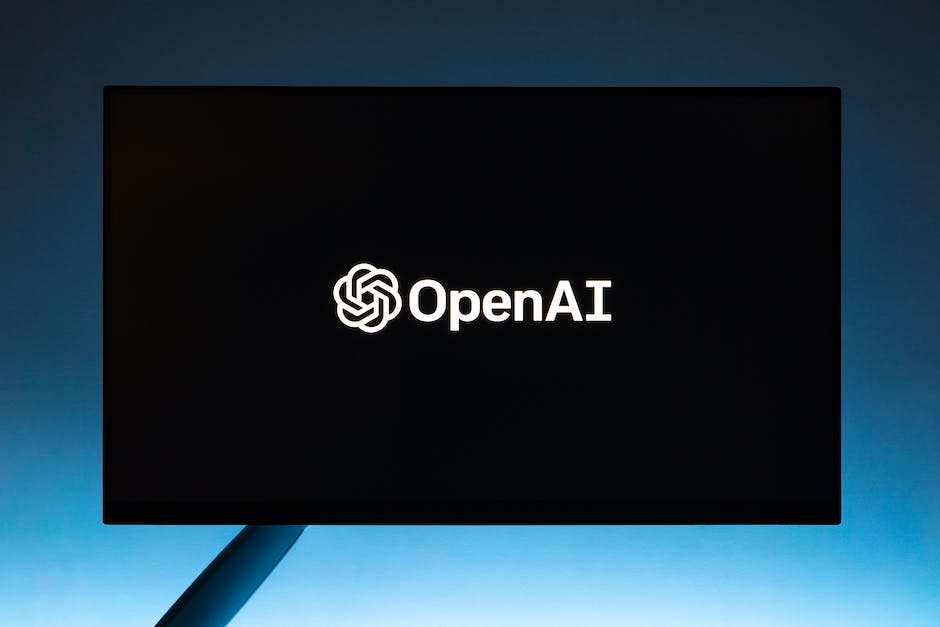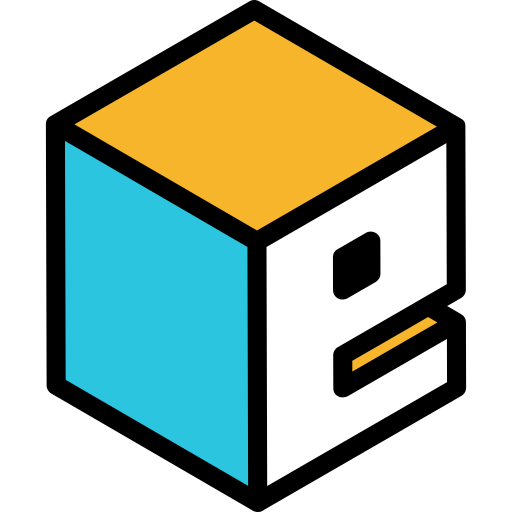In the era of data and digitization, business intelligence has emerged as a transformative tool shaping the business ecosystem. With the breadth of its application expanding into various sectors, understanding its role in crucial departments such as Human Resources becomes all the more significant. The convergence of business intelligence and human resources has proven to significantly enhance operational efficiency by processing copious amounts of data, deriving meaningful insights, and making strategic, data-driven decisions. This essay unravels the intricacies of business intelligence and its applications in Human Resources, taking you through real-world case studies, strategies for successful implementation, and a sneak peek into the future trends within this realm.
Understanding Business Intelligence
Understanding Business Intelligence
Business Intelligence (BI), as a technology-driven process, is essential for analysing data and delivering actionable information in the corporate world. Its significant role is to help businesses optimize their operations, drive productivity, and react promptly to shifting market trends. By providing comprehensive insight into data, BI allows organizations to make informed decisions swiftly and more accurately.
Business Intelligence’s primary goal is to facilitate better business decisions by making data-driven information more accessible to corporate stakeholders. With BI, a business can leverage technologies, practices, and applications to analyse critically important data and demonstrate these analyses on a dashboard, thus assisting in corporate decision-making.
The Role of Business Intelligence in Decision Making
BI technology plays a pivotal role in making informed and fact-based decisions in organizations. Rather than relying on estimates or guesses, organizations can utilize data reporting, online analytical processing, business performance management, and prescriptive and predictive analytics offered by BI. Consequently, they can make strategic decisions based on tangible data.
By delivering accurate and timely information, a BI system can help decision-makers understand the current business scenario and forecast future trends. It offers a superior understanding of consumers’ behaviors, market trends, and operational efficiency, enabling businesses to identify areas of strength and weakness and adjust strategies accordingly.
Business Intelligence: Empowering HR Management
When it comes to Human Resources, business intelligence can revolutionize how HR functions. By employing BI strategies, HR can access critical data on employee performance, recruitment and retention rates, and encompassing workforce trends, all in real-time. This allows for strategic decision-making that can enhance talent acquisition, improve employee engagement, and optimize workforce productivity.
BI systems enable HR professionals to implement data-driven strategies. For instance, they can analyze patterns in employee absenteeism, turnover rates, or performance metrics and use this data to inform their recruitment, retention, or training efforts. By leveraging the insights gained from this data, HR can make well-informed decisions that align with the company’s goals and objectives.
Moreover, using BI, HR departments can forecast future workforce needs, assist in succession planning, and identify potential skill gaps. It allows them to be more proactive rather than reactive, preparing adequate solutions and strategies in anticipation of forthcoming HR challenges.
Business Intelligence is pivotal in the realm of decision-making within today’s businesses – and Human Resources is no exception. Its function is far-reaching with it not only producing real-time and precise data, but also acting as a driving force for businesses to make strategic and data-informed decisions. These decisions can range from understanding an employee’s behavioural patterns to predicting emerging trends within the workforce and even the creation of strong HR strategies. In summary, Business Intelligence is an essential tool that provides support to businesses in their quest for success in an ever-evolving and competitive business environment.

Business Intelligence in Human Resources
Demystifying the Concept of Business Intelligence within Human Resources
When we talk about Business Intelligence (BI) within the context of Human Resources (HR), we’re referring to the marriage of technology-based processes with data analytics. The aim here is to optimize decision-making, efficiency, and productivity across an organization’s HR department. To accomplish this, a suite of analytical tools and methodologies are deployed. These tools help extract valuable insights from everyday HR operations, enhancing areas such as recruitment, performance management, talent retention, and workforce planning.
The Role of Data Analytics in HR
Data analytics plays a significant role in HR, especially when it comes to decision-making. Using BI tools, HR professionals can assess various parameters regarding employees and prospective hires. These tools can identify patterns within datasets, streamline administrative tasks, automate routine processes, and inform strategic decisions. Some areas that can benefit significantly from the application of data analytics in HR include:
- Talent Acquisition — Through data analysis, HR can identify the qualities and skills that make an individual successful in specific roles. This enables the department to refine its recruitment strategy and improve the quality of its hires.
- Performance Management — With data analytics, HR can develop a fair and data-driven performance management system. This allows for an unbiased assessment of an employee’s productivity, contributions, and overall performance.
- Talent Retention — Predictive analysis can help HR identify employees at risk of leaving. The department can then enact strategies to improve retention, such as targeted training and development insights.
- Workforce Planning — BI tools can assist HR in accurately predicting future workforce needs based on projected growth, employee turnover, and industry trends.
Implementing Business Intelligence Tools
Several BI tools are available for HR professionals to harness. Their main aim is to gather, analyze, and interpret a massive amount of raw data into valuable, actionable insights.
- Workforce Analytics — This involves the analysis of employee performance data, which can help HR professionals identify productivity trends, performance gaps, and training needs.
- Predictive Analytics — This enables HR to forecast possible outcomes based on the current data. Predictive models can identify future staffing needs, predict turnover, or anticipate the impacts of changes in HR policies.
- Employee Surveys — BI can structure and analyze data from employee satisfaction surveys, exit interviews, and feedback forms, which can provide valuable insight into the overall work environment and employee engagement.
- Talent Analytics — Using data mining and business intelligence, HR can predict future staffing needs, anticipate the cost and impact of turnover, and identify key characteristics of high-performing employees.
Benefits of Business Intelligence in HR
- Improved Decision-making – Data-driven insights facilitate more informed, objective, and faster decision-making.
- Increased Efficiency – Automated processes can streamline the HR workflow, reducing time spent on administrative tasks.
- Enhanced Talent Management – Predictive analytics can aid in selecting, developing, and retaining top talent.
- Strategic Workforce Planning – BI allows HR to anticipate future workforce needs and plan accordingly to bridge any potential skills gap.
Human Resources (HR) has evolved significantly in recent years and is now a strategic function supported by data-driven insights. This sophistication in using business intelligence tools in HR is revolutionizing the way organizations understand and manage their human capital, leading to enhanced efficiency, strategic decision-making, and overall effectiveness of HR operations.

Photo by andrewtneel on Unsplash
Case Studies: Business Intelligence in HR
Business Intelligence Enhances IBM’s HR Operations
A fitting example of this transformation is IBM, one of the Fortune 500 companies. The firm has brilliantly harnessed the power of Business Intelligence (BI) to revamp its HR processes, one testament of which is the establishment of their Advanced Workforce Analytics team.
The team’s role involved leveraging BI tools, notably Watson Analytics, R Analytics, and software developed internally. These tools enabled them to extract valuable insights from two aspects of data – structured (like employee demographics or survey responses) and unstructured (like comments or session recordings). Hence, IBM could discern employee needs, concerns, and aspirations effectively, empowering the management to make decisive and informed choices.
This strategic use of BI tools paid off with the results being tremendously positive. Not only did the company observe a surge in employee satisfaction, but it also saw a drop in attrition rates and an increase in productivity. The company’s leadership reported optimization of decision-making, leading to the Advanced Workforce Analytics team bagging the 2019 HR Innovation Award for their data-driven approach.
Business Intelligence in HR: The Case of Starbucks
When it comes to using BI in HR, Starbucks pioneered cultural analytics – the process of quantifying and analyzing the cultural fit between the company and its employees. The team used PowerBI to integrate and visualize data from multiple sources including HR systems, survey responses, and external factors like labor laws or economic indicators.
These insights helped Starbucks develop a data-driven HR strategy that is customized to fit each country it operates in. A key tool enabled by their BI platform is the ‘cultural fit map’, which measures how well employees fit into Starbucks’ company culture. This has helped them identify potential areas of friction and take proactive measures to address them.
The results for Starbucks have been equally impressive. The company has seen a reduction in turnover and has strengthened its reputation as being one of the best places to work in the world. Starbucks has notably improved its cultural fit across its global operations and continues to use BI to inform HR strategies.
An Illustration of Business Intelligence in HR: The Example of General Motors
Consider the case of General Motors (GM), who utilized the power of Business Intelligence (BI) to transform their recruitment approach. The HR department at the company observed a worrying pattern – their new recruits, despite being high-caliber talent, were frequently leaving the company within their first two years of engagement.
To gain deeper insights into this trend, GM relied on BI. PowerBI, a known data visualization tool, was put to use, and data from numerous HR databases was integrated. An attrition analysis was undertaken to demystify the patterns, trends, and reasons behind the employee exodus.
The insights culled from this process prompted significant modifications. GM overhauled their onboarding procedure, introduced career advancement programs, and crafted flexible work schedules, particularly designed to cater to their younger workforce.
The results of this BI-infused HR strategy were compelling. In just three years, GM saw a 15% dip in employee turnover. Moreover, GM’s talent acquisition team reported not just an optimized recruitment process, but also an enriched understanding of their employees’ needs and expectations, due to the effective application of BI tools.

Implementing Business Intelligence in HR
Taking a Closer Look at Business Intelligence in HR
At its core, Business Intelligence (BI) is a process powered by technology that is used to analyze expansive data sets, transforming this raw data into actionable information that can guide strategic and tactical decision-making. When integrated with the Human Resources (HR) function, BI can deliver meaningful insights that enhance productivity, shape pertinent decisions related to employee management, and ultimately, add significant value to the HR landscape. The fruits of incorporating BI into HR include a lower attrition rate, improved employee engagement, and an ability to make predictive models for potential HR scenarios, to name a few.
Choosing the Right Business Intelligence Tools
Implementing business intelligence in the HR department starts with selecting the right BI tools. These tools should have the capacity to handle the amount of data your organization deals with, offer predictive analytics, be user-friendly, and integrate seamlessly with your existing HR systems. Before making a selection, it’s important to define your objectives and understand the type of data you’ll be working with. You should consider a demo or a trial phase to ensure the tool meets your requirements and is easy for your team to use.
Cultivating a Data-Driven Culture in HR
Cultivating a data-driven culture within the HR department is crucial to successfully implementing business intelligence. This shift requires training HR team members on how to use business intelligence tools and understanding the value of data-driven decision making. The management should lead by example and consistently share insights derived from data to facilitate the inclination towards making decisions based on data and analytics.
Possible Challenges and Solutions During Implementation
Despite its numerous benefits, certain challenges may surface during the implementation of business intelligence in the HR department. Potential difficulties include resistance from HR staff, lack of technical expertise, data privacy issues, and the high cost of BI tools.
- Resistance from staff: Change can often be met with resistance. To mitigate this, emphasize the benefits of BI, provide necessary training, and gradually integrate BI tools into daily HR activities.
- Lack of technical expertise: Not everyone in the HR department might possess the technical skills required for BI tools. Providing training or hiring a BI expert can be beneficial in these scenarios.
- Data privacy issues: BI in HR involves handling sensitive employee data. Ensure that the BI tools you select have stringent security measures and adhere to all relevant data privacy regulations.
- High cost of BI tools: While some BI tools can be expensive, it’s important to evaluate their cost against the potential efficiency and insights they offer. There are also various cost-effective BI tools available in the market that cater to different budgets.
Establishing business intelligence within the human resources department can offer substantial advantages. The process requires the selection of suitable tools, fostering an environment that values data, and overcoming associated obstacles. Through such efforts, business can leverage vital insights, make decisions based on data, and markedly improve their HR procedures.

Future Trends in HR Business Intelligence
Artificial Intelligence and Its Role in HR Business Intelligence
The rapid advancement of Artificial Intelligence (AI) has made it a prominent feature in the field of business intelligence. Regarding human resources, AI not only streamlines routine and administrative HR tasks but also prepares the way for smarter HR initiatives. These could range from intelligent recruitment tools and talent analysis to employee engagement aids and predictive analytics.
AI is capable of quickly scanning through resumes or leveraging algorithms to match prospective candidates to job openings basis varied factors such as skills, experience, geographical location, and salary expectations. The potential of AI within HR is vast and game-changing, revolutionizing the HR landscape to be more efficient and focused on data.
Predictive Analytics in HR
Predictive analytics involves using statistical techniques and algorithms to analyze current and historical data in order to predict and anticipate future outcomes. As data-driven decision-making becomes more and more important for businesses, the use of predictive analytics in HR is increasing.
Predictive analytics can be applied in a variety of areas in HR, such as predicting employee turnover, forecasting future hiring needs, predicting the success of potential hires, identifying highest-performing employees, and optimizing benefits and compensation. By using data to foresee possible future scenarios, HR managers can make more informed and strategic decisions.
Data Visualization in HR
Data visualization is another trend that is increasing in HR. It involves presenting data in a graphical or pictorial format to make complex data understandable and actionable.
In the context of HR, data visualization can help HR managers understand complex HR data and draw insights from it more quickly and easily. Examples include using data visualization tools to present employee performance data, attrition rates, diversity statistics, and talent acquisition data. By visualizing data, HR managers can identify patterns and trends that might not be evident in raw data.
The Future: AI, Predictive Analytics, and Data Visualization
Looking to the future, it’s clear that these three technologies – AI, predictive analytics, and data visualization – will continue to drive changes in HR business intelligence. Each of these technologies has the potential to revolutionize HR, provided that HR professionals are equipped with the right skills and tools to leverage them effectively.
For example, AI can help HR managers make more informed and bias-free hiring decisions by automating routine tasks and providing data-driven insights. Similarly, predictive analytics can help HR managers anticipate future scenarios and make proactive decisions, while data visualization can help HR managers understand complex HR data and use it to drive strategic decisions.
In summary, the future of HR business intelligence will likely see a merging of these trends, resulting in a more data-driven, strategic, and efficient HR function.

As glimpsed through various case studies and practical implementation strategies, the integration of business intelligence in Human Resources stands as an influential front-runner in predicting trends, enhancing decision-making, and propelling businesses towards a more advanced and informed future. This discussion extends beyond mere surface-level understanding, pointing towards a critical transformation that organizations need to adopt to remain relevant in the competitive business landscape. With promising future trends like predictive analytics, artificial intelligence, and data visualization on the horizon, BI’s role in HR is bound to become more comprehensive and integral. Together, they have the potential to redefine the HR landscape dynamically, guiding businesses into the age of intelligent decision-making and strategic planning.

Leave a Reply